| The smallest things we will talk about are galaxies:
typically 10 billion (1010) stars and a size of 20 kpc (1020 m) M51 in Can Ven: HST picture |
 |

| The smallest things we will talk about are galaxies:
typically 10 billion (1010) stars and a size of 20 kpc (1020 m) M51 in Can Ven: HST picture |
 |
| But most of the time we'll be talking about clusters of galaxies: this is Coma cluster. Typically 1 million billion (1015) Msun and a size of 2 Mpc (1022 m) |
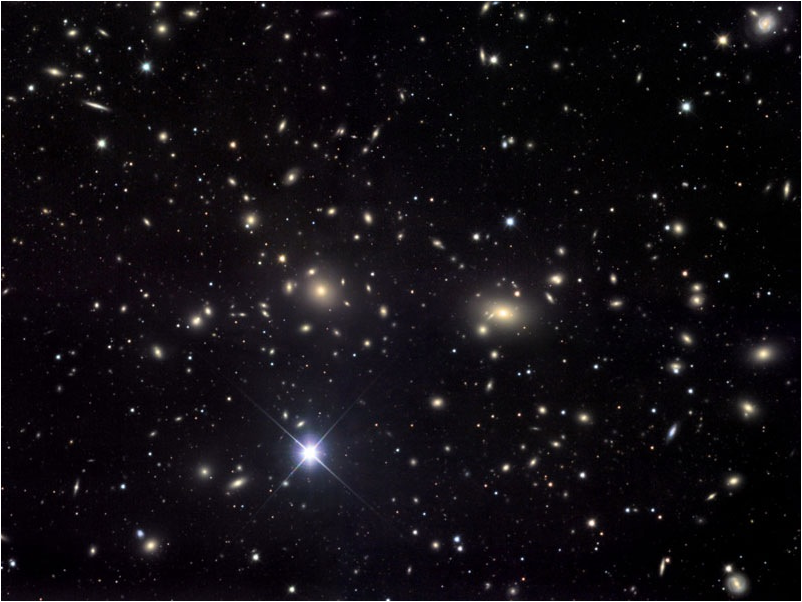 Jim Misti Misti Mountain Observatory |
| Hubble
found vel. of recession ∝
distance \color{red}{v = Hd,H = 70{\rm{ km/s/Mpc}}}
1 Mpc (megaparsec) = 3x1022 m. Note although all galaxies are receding from us, does not imply we are at the centre: in the currant cake model all currants see all the others as receding |
 |
| RULE 1 in Physics 100: Never mix your units!
\color{red}{
\begin{array}{l}
H = 70 \times 1000/3 \times 10^{22} \approx 2 \times 10^{ - 18} s^{ - 1} \\
\Rightarrow \frac{1}{H} \approx 5 \times 10^{17} {\rm{ s }} \approx 17 \times 10^9 {\rm{ yrs.}} \\
\end{array}}
|
 |
| What does this time represent? Must be age of universe: if expansion does not change i.e. 17x109 yr. ago, all the galaxies were in the same place. Universe had a beginning, implied by the big bang. Can run Hubble expansion back: we would like to use this to predict what will happen in the end |





|

How can we tell if the universe will expand forever?
| As a model, consider this as an escape velocity problem. How hard do we need to throw a galaxy on the "outside" so that it escapes? Note: our calculation had better not depend on r!
\color{red}{
\frac{1}{2}mv^2 - \frac{{GMm}}{r} = 0}
butv = Hr and the total mass of the universe inside
M = 4π/3 ρ r³ |
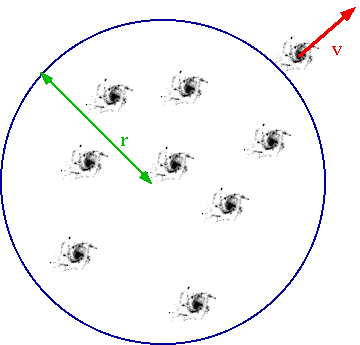 |
H²r² = 2G4π/3 ρ r²
The entire future of the universe is given by this one number!!!!!!!!!
(and isn't it nice that the end of the universe is defined by Omega Ω!)So if
|
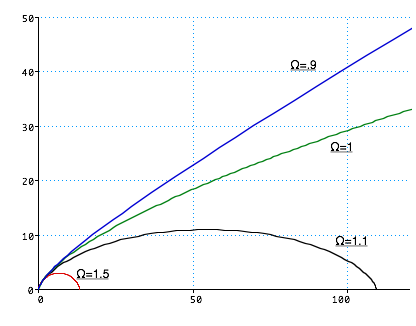 |
| Obviously must average over large enough volume such that universe is smooth R > 100 Mpc, and the universe is a very lumpy place! |  |
| direct observation i.e. measurement of velocities of individual stars in nearby => rotation curves or measurement of hydrogen via 21cm line or estimates of no. of stars | 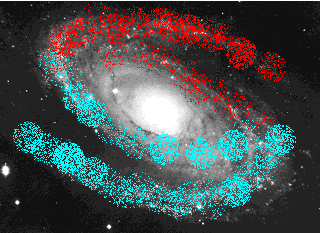 |
| Typical Spiral (NGC3198) R ≈ 20 kpc but outer parts are just seen as H gas | 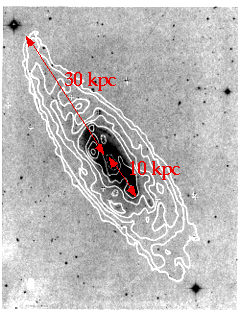 |
| Luminosity of galaxy should reflect mass | 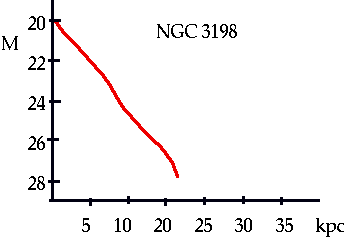 |
| Most of the light is fairly concentrated, so this should be good approx to the mass. but the outside part of the galaxy is rotating far too fast: i.e. velocity curve doesn't drop as expected. Means a lot of mass in outside part of galaxy: the "halo" |
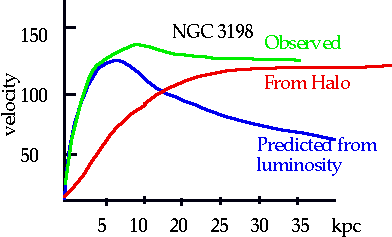 |
|
.gif) |
| A check: The Coma cluster | 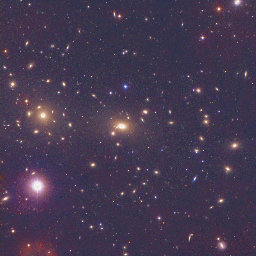 |
|
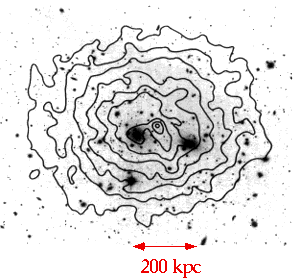 |
| Also large masses bend light, so large clusters show "gravitational lensing" of very distant objects. |  |
| Allows us to estimate the mass. For Abell 2218 we seem to have at least 300 times as much dark matter as luminous matter | 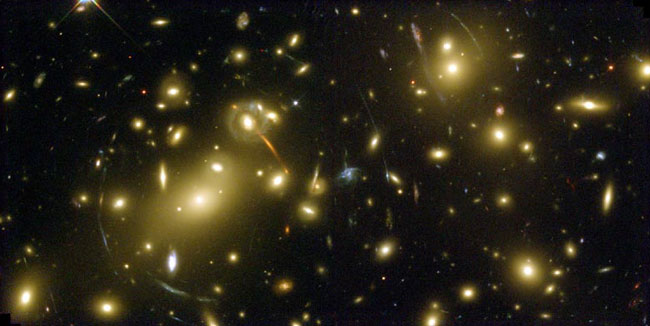 |
| Combination of lensing (blue) and X-rays (red) in the bullet cluster: |
Strong evidence for non-interacting dark matter:
|
a) What the hell? i.e. what is the dark matter?
b) Why the hell? i.e. why is Ω~1 (after all it could be anything?)
Ω < 3
ATLAS (2008) will be able to rule out a lot more options |
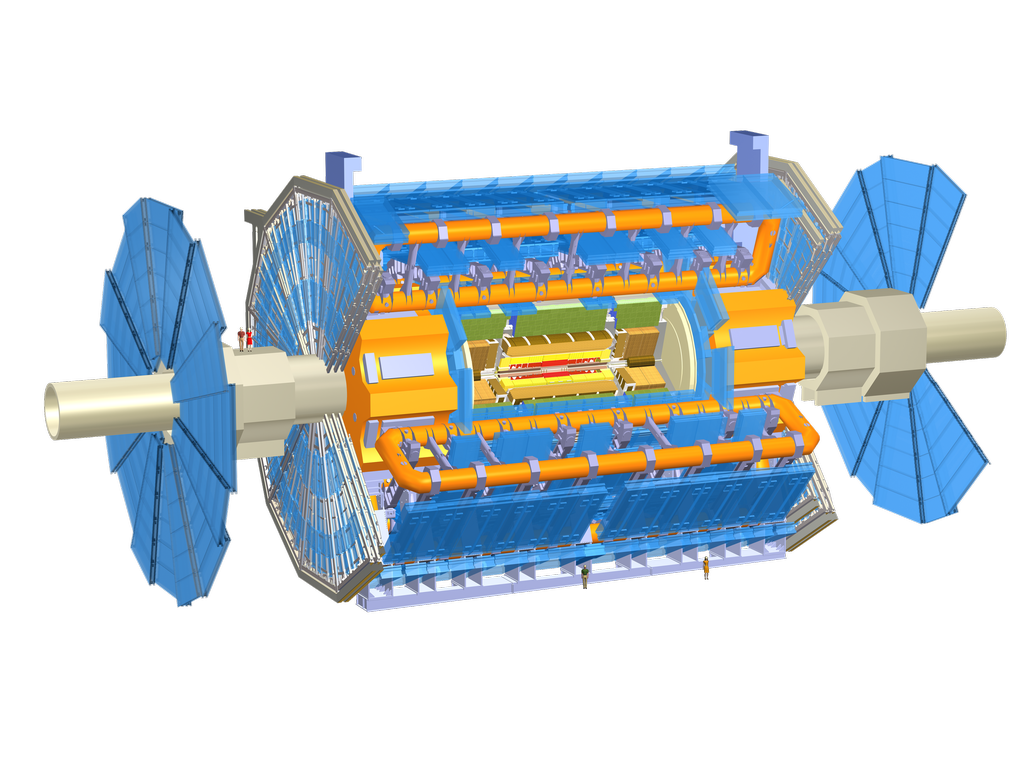 |
| e.g. Picasso (Queens-Montreal) Nucleus will recoil and transfer energy to super-heated freon liquid and cause transition to gas. |
DEAP (Queens-Carleton ++ ): will use liquid argon and look at recoil |
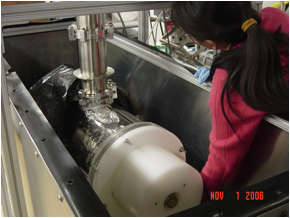 |
| COBE and WMAP comparison |
| Normally density fluctuations die away (e.g sound waves) but in massive fluid they get amplified by gravity |





| Can simulate structure formation on large scale with (massive) n-body computer codes |
| and on scale of clusters. {Performed at the National Center for Supercomputer Applications by Andrey Kravtsov (The University of Chicago) and Anatoly Klypin (New Mexico State University). |
| Dark Matter is bad enough, but now dark energy ... |  |
| Type 1a Supernovae Mv = -20 allows us to measure out to 3000Mpc: LBL High Redshift Supernova Search |
| Canada-France Hawaii Telescope (CFHT) | 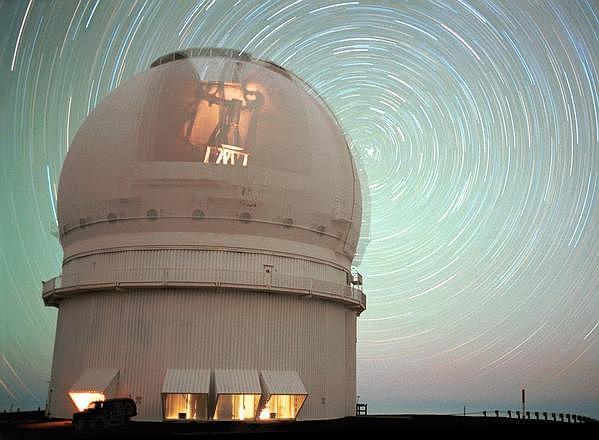 |
| (U of T and others) now provides best data from CFHT: The implication is that the expansion of the universe is accelerating. | 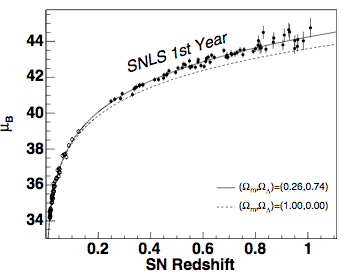 |
| May imply cosmological constant Λ (Einstein's "fudge factor"): in other words vacuum has an energy. |  |
Combining all the data gives "concordance model
|
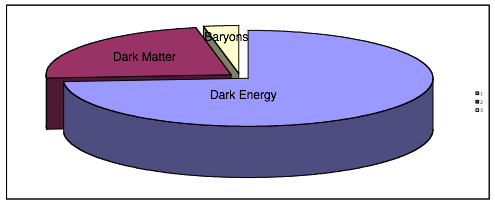 |
| The only working theory for particles (the standard model) gives \color{red}{
\Omega _\Lambda = 10^{110} - V_0
}
where V₀ is a (unknown) correction. You will notice a discrepancy! |
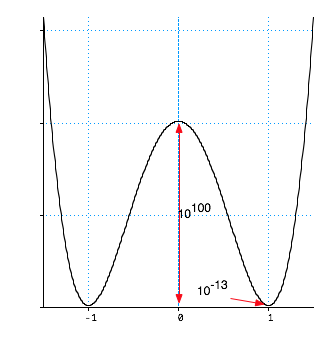 |